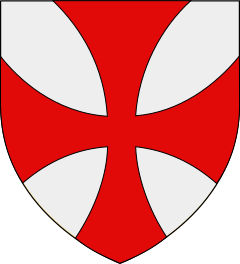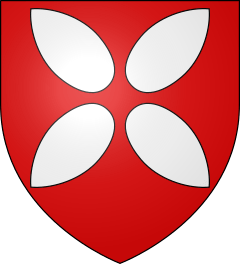Counts of Comminges facts for kids
This article tells you about the Counts of Comminges, who were important leaders in a region of France called the County of Comminges. A "count" was a noble ruler, similar to a duke or a prince, who governed a specific area called a "county." These counts held power for many centuries, guiding their lands and people through different times in history.
Contents
Who Were the Counts of Comminges?
The County of Comminges was a historical area in what is now southwestern France. For hundreds of years, different families ruled this land, holding the title of "Count of Comminges." These counts were powerful figures who managed the land, collected taxes, and led their people.
The First Counts: House of Comminges
The first known count of Comminges was Garcia Aznar, who ruled from 836 to 846. He was an important early leader. After him, his son, Aznar Garcia, took over and ruled for a very long time, from 846 to 905.
Many counts followed in this family line. They often passed the title from father to son. Some of the notable early counts include:
- Lupus I Aznar (905-935)
- Arnaud I (946-957)
Sometimes, brothers would rule together, like Roger I and Arnaud II, who shared power from 957. Roger I was also important because he started the County of Carcassonne. Later, Odo and Roger II also ruled together from 1011 to 1035.
The family continued to rule for many generations. Some counts were named Bernard, and there were several of them:
- Bernard I (1105-1145)
- Bernard II (1145-1153)
- Bernard III (1153-1176): He actually changed his name to Bernard after his brother died!
- Bernard IV (1176-1225): He also became the Count of Bigorre through marriage.
- Bernard V (1225-1241)
- Bernard VI (1241-1295)
- Bernard VII (1295-1312)
- Bernard VIII (1312-1336)
After Bernard VIII, his son John I ruled for a short time (1336-1339). Then, his brother Peter Raymond I (1339-1341) and his son Peter Raymond II (1341-1376) took over.
The last ruler from this main family line was Margaret, who was a countess. She ruled from 1376 to 1443. She shared power with her husbands. After she passed away, the County of Comminges became part of the French crown, meaning it was directly controlled by the King of France, Charles VII of France.
New Rulers: House of Lescun
Even though the county became part of the French crown, kings sometimes gave it to trusted friends. In 1462, King Louis XI of France gave the County of Comminges to his friend, Jean de Lescun. Jean ruled until 1472. He was also known as the "Bastard of Armagnac" and was a Marshal of France, a very high military rank.
House of Aydie
When Jean de Lescun passed away in 1472, the county went to Odet of Aydie. Odet was married to Marie of Lescun, who was related to Jean. Odet was a very important person, serving as a Constable of France and a close advisor to King Louis XI. He ruled until 1498.
Since Odet did not have a son, King Louis XII of France decided to officially make the County of Comminges a permanent part of the French crown again in 1498. However, Odet's daughter's family still used the title of Count of Comminges.
Later Families with the Title
Even after the county was officially part of France, several other families continued to use the title of Count of Comminges. These were more like honorary titles rather than ruling positions.
House of Foix-Lautrec
- Jean of Foix-Lautrec (1472–1494)
- Odet de Cominges (1494–1528)
- Enrique de Foix-Lautrec (1528–1540)
- Claudia de Foix-Lautrec (1540–1553)
House of La-Barthe
- Paul of La Barthe (1552–1565)
House of Comminges-Guitaut
- Gaston of Comminges (1638–1670)
- Louis of Comminges (1670–1712)
House of Comminges-Lastronque
- Roger James of Comminges (1718–1785)
- Roger Louis of Comminges (1785–1789)
- Roger Aymeric of Comminges (1789–1840)
House of Comminges-Saint-Lary
This family continues to hold the title of Count of Comminges to this day.
- Elie de Comminges-Péguilhan (1840–1894)
- Aimery Elie de Comminges-Péguilhan (1894–1925)
- Bertrand de Comminges-Péguilhan (1925–1987)
- Jean-Odon de Comminges-Péguilhan (1987– to date)



